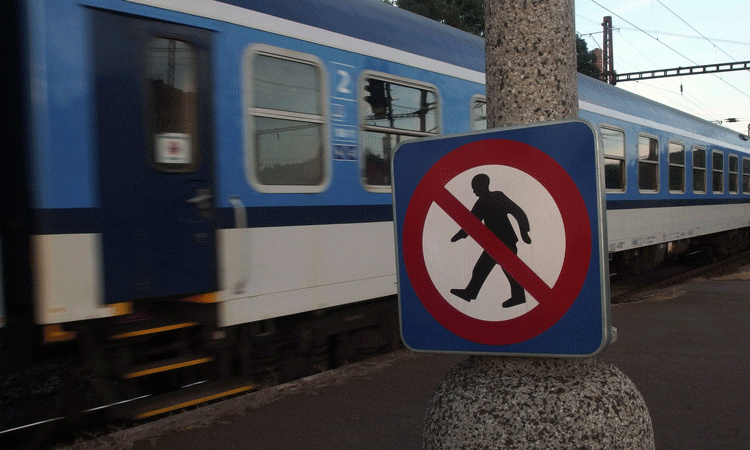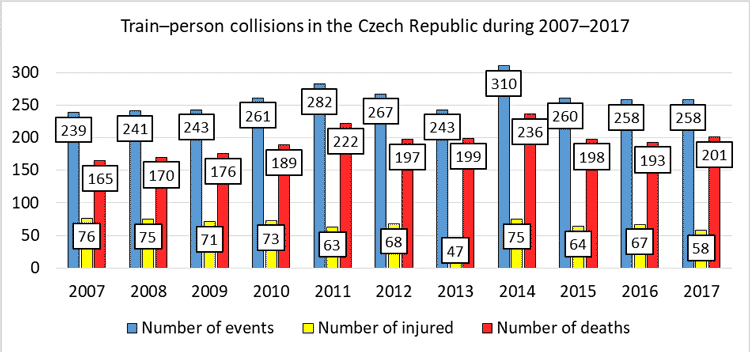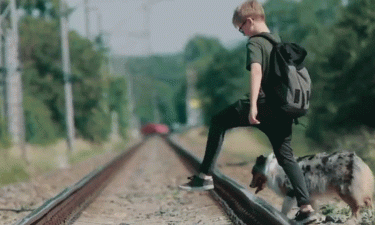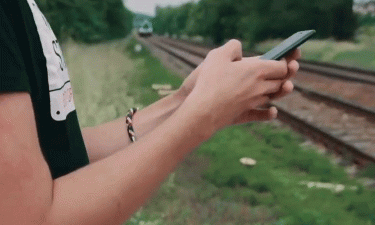Tracks belong to trains: Preventing railway trespassing in the Czech Republic
Posted: 3 April 2019 | Pavel Skládaný - Transport Research Centre, Pavel Tučka - Transport Research Centre, Pavlína Skládaná - Transport Research Centre | 1 comment
Trespassing on railways and track safety can sometimes be overlooked when discussing transport safety. The Transport Research Centre (CDV) intends to change this with new educational video material which is to be circulated in schools in the Czech Republic. Pavlína Skládaná, Pavel Skládaný and Pavel Tučka from the CDV explain more.


Track incidents which occur as a result of trespassing account for approximately 200 casualties annually in the Czech Republic. Increasing education surrounding this topic would help to significantly reduce this number, but young people – and to some extent the wider population – have relatively few opportunities to learn best and safe practices of behaviour at tracks. Consequently, the Transport Research Centre (CDV) has circulated two educational videos aimed at school students of a range of ages. This educational material has the financial backing of the Ministry of Transport under the special-purpose non-investment subsidy in 2018, with an aim of increasing the awareness of track safety.
Targeted educational material for the young
The initial project stemmed from the idea to circulate targeted educational material among young people as they are more responsive to new information than adults, and additionally, the knowledge acquired will serve them for the rest of their lives. Moreover, children, especially younger children, are often good distributors of information, meaning by targeting children entire families reap the benefits.


The project was grounded in the habits, knowledge and attitudes of younger people, not just accident statistics. The aim of the project was then to define the factors that must be held in the highest regard when formulating educational material related to railway trespassing. Several focus groups at schools were organised and from the observations and questionnaires, attitudes were documented.
Educational measures are necessary


The results of the primary research confirmed that educational measures are necessary because children and young people trespass on tracks not only to save time, but as a leisure activity too: Games include seeing how close one can get, putting objects on the tracks and taking selfies. At school, the exposure to safety information concerning safe behaviour around tracks, or the rules that surround trespassing on the railway is minimal. Education is usually concentrated on road safety issues, and this needs diversifying.
In principle, children do recognise that crossing and walking along the tracks in areas which are not authorised is illegal and may result in penalty action. But, when concrete shortcuts are frequently used by adults, perception of the illegality of such behaviour is minimised, and the behaviour becomes ‘normalised’. At the same time, young people hardly ever encounter any form of surveillance or enforcement by police or railway staff, which are precisely the measures that would prevent them from trespassing.
Despite general knowledge of the risks of railway trespassing, children believe individual shortcuts to be safe when respecting certain safety precautions: Increased vigilance, knowledge of timetables or watching the semaphore signals. The outcome of the survey reveals that the eventuality of an accident despite vigilance is admitted by girls rather than boys, whether this be down to skidding, stumbling or falling whilst on the tracks.
Peer pressure and punishment


The study also found that parents, relatives, teachers and other adults do not influence the attitudes and behaviours of younger people as much as hoped. Children continue to use illegal shortcuts to cross railway lines despite possible bans from parents. However frequently parents are not informed of their child’s behaviour, or they choose to ignore it, as do teachers. Adults then serve as an example of undesirable behaviour, rather than good practice.
Parents’ tolerance towards trespassing varies significantly depending upon location; where the railway track constitutes as an important barrier between two parts of town, the trespassing becomes commonplace. Here, patterns of risky behaviour are characteristic in whole families and neighbourhoods. The survey also revealed that large majorities of citizens living near railway tracks miss out on important safety knowledge, including information such as where and when the crossings are legal and safe, or what the risks of railway trespassing are.
Knowledge gaps and differing attitudes
The results of the study imply basic gaps in knowledge and different attitudes towards railway trespassing. These discrepancies should become a target of educational material. The knowledge gaps that children exhibit concerning railway trespassing is mirrored in the gaps of knowledge adults have. Both groups rely on personal assessments of train distance and speed, the timetable and the noises made by approaching trains. Unlike adults, young people have more confidence in their abilities to cross unsafe and unauthorised areas; they do not fully realise the possible consequences of their actions. The educational material should also aim to highlight the problems and solutions surrounding peer pressure.
Two short educational films have been produced by the CDV to briefly highlight basic principles of safe behaviour when in contact with railway tracks. This material also includes the consequences of not following these principles.
Tracks belong to trains
The two videos share a name ‘Tracks belong to trains’ and are aimed at two different age groups: 11-14 year olds and 15-18 year olds. This is not exclusive content however; other age groups may also benefit. Both videos show several commonplace situations in which the actors do not behave appropriately around railways. The character of one video faces punishment for his behaviour from the police, his school and his parents; while in the other video, the boy’s behaviour is fatal.
Biographies















Awesome! Thanks for sharing this post. I think that Railway trespass is a very risky but common practice, resulting in approximately 200 accidents per year in the Czech Republic.